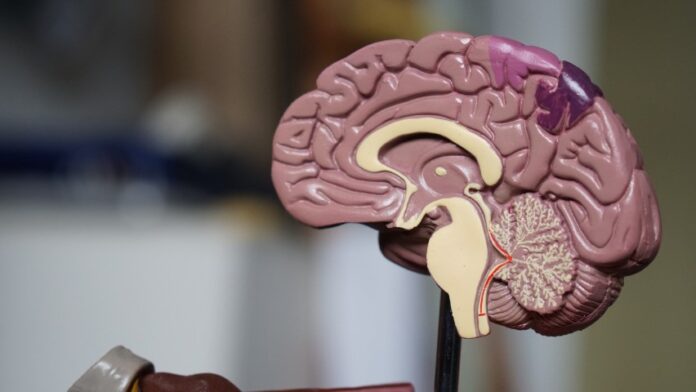The human brain’s navigation system is an intricate and multifaceted network responsible for spatial cognition and orientation. The ability to navigate our surroundings is a fundamental aspect of human behavior, enabling us to explore, remember, and interact with the world around us. This article aims to delve into the underlying mechanisms and brain regions involved in human navigation, shedding light on how this complex system allows us to find our way through the labyrinth of the environment. By reviewing various experimental findings and cutting-edge research, we hope to gain a deeper understanding of the neural basis of human navigation and its implications for neuroscience and beyond.
Navigation is an essential aspect of human life, dating back to our earliest ancestors who relied on spatial cognition to survive in their environments. The human brain’s navigation system comprises a combination of sensory inputs, memory, and cognitive processes that work in unison to facilitate our movement and orientation in both familiar and novel environments. As technology has advanced, researchers have made significant strides in unraveling the mysteries of this complex system. This article will present an overview of the key brain regions involved in human navigation and the cognitive processes that underpin our navigational abilities.
Brain Regions Involved in Navigation:
a) Hippocampus: The hippocampus is a central hub for spatial cognition and memory. Studies have shown that damage to the hippocampus can severely impair navigation abilities, leading to difficulties in forming new spatial memories and recalling familiar routes.
b) Entorhinal cortex: The entorhinal cortex plays a crucial role in spatial representation and acts as a bridge between the hippocampus and neocortex. Grid cells, discovered in this region, provide a remarkable mechanism for mapping space, aiding in path integration and navigation.
c) Posterior Parietal Cortex (PPC): The PPC is responsible for integrating sensory information related to spatial awareness, such as self-motion, landmarks, and environmental boundaries. Lesions in this region can lead to spatial disorientation and impaired navigation skills.
d) Medial Prefrontal Cortex (mPFC): The mPFC is involved in higher-order cognitive processes related to navigation, including planning, decision-making, and goal-directed behavior. It helps to guide our movements based on previous experiences and future goals.
Cognitive Processes Underlying Navigation:
a) Spatial perception: The process of perceiving and encoding spatial information from sensory inputs, such as visual landmarks and proprioceptive cues, forms the foundation of human navigation.
b) Spatial memory: Humans possess various types of spatial memory, such as allocentric memory (relating to external landmarks) and egocentric memory (relating to self-motion). These memories allow us to create mental maps and navigate through familiar environments.
c) Path integration: Combining self-motion cues with spatial memory enables path integration, wherein humans can estimate their position and orientation relative to a starting point, helping us navigate through spaces without external cues.
d) Route planning: The brain’s navigation system enables us to plan and execute routes to reach specific destinations, a process that requires coordination between the hippocampus and the prefrontal cortex.
Neuronal Coding and Representation of Space:
a) Place cells: Discovered in the hippocampus, place cells fire in response to specific locations in an environment. They create a neural map of the surroundings and play a vital role in spatial memory formation.
b) Grid cells: Found in the entorhinal cortex, grid cells exhibit a hexagonal firing pattern, creating a triangular grid-like representation of space. This unique coding mechanism aids in path integration and navigation.
c) Head direction cells: These cells, predominantly found in the postsubiculum and thalamus, encode the direction the individual is facing, providing a compass-like reference for navigation.
Development and Plasticity of the Navigation System:
a) Development in childhood: The navigation system undergoes significant development during childhood, influenced by both genetic factors and environmental experiences. Children’s navigation skills improve as they explore and interact with their surroundings.
b) Navigation training and experience: The human brain’s navigation system exhibits plasticity, allowing it to adapt and rewire based on navigation training and experiences. Taxi drivers and expert navigators, for example, demonstrate an enlargement of the hippocampus associated with their specialized skills.
Navigation Impairments and Disorders:
a) Developmental spatial disorders: Some individuals suffer from developmental spatial disorders, such as developmental topographical disorientation (DTD), characterized by a persistent and lifelong inability to navigate, even in familiar surroundings.
b) Neurodegenerative diseases: Alzheimer’s disease and other neurodegenerative conditions can lead to severe spatial disorientation and navigation difficulties due to the progressive deterioration of brain regions involved in spatial cognition.
The human brain’s navigation system remains an intriguing and crucial area of research within neuroscience. Understanding how the brain processes spatial information, navigates through environments, and forms mental maps has significant implications for clinical applications, such as developing strategies to assist individuals with navigation impairments. As technology and research methodologies advance, we can look forward to further unraveling the complexities of the human brain’s navigation system, shedding light on the profound mysteries of our spatial cognition and behavior.


